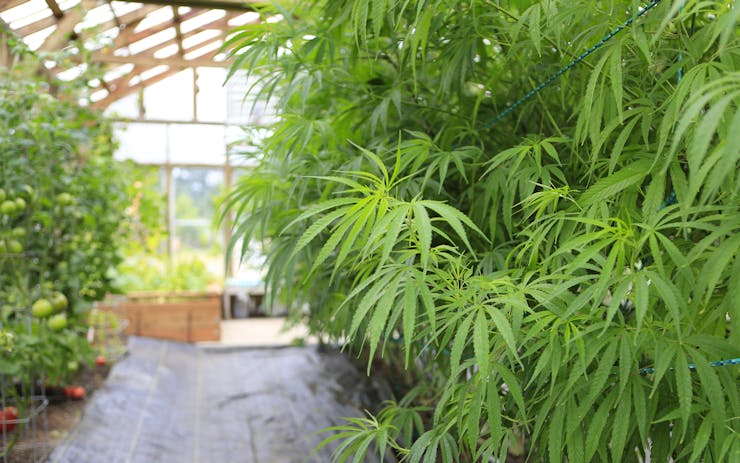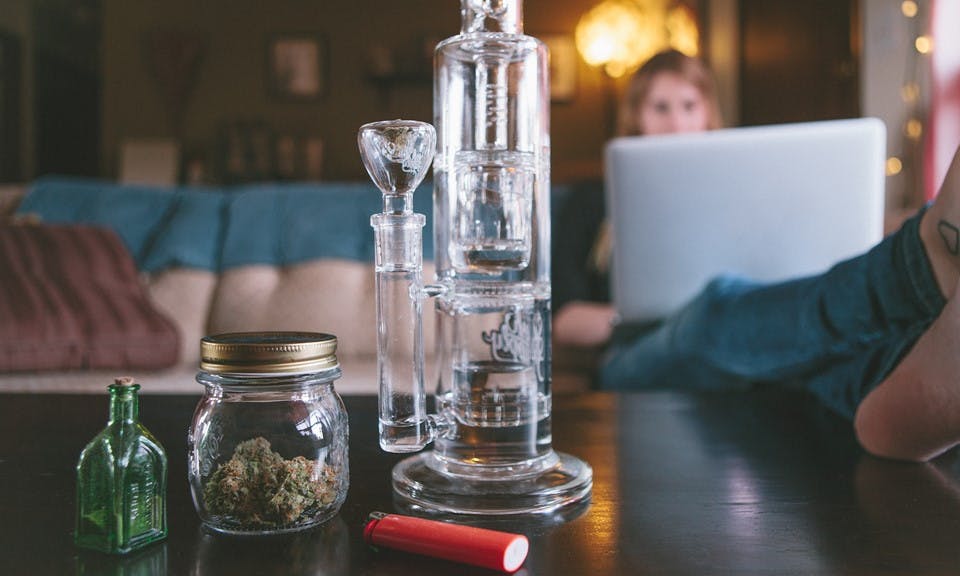It’s no secret that the cannabis industry has an energy problem. A 2011 study by Dr. Evan Mills, a senior energy scientist at UC Berkeley, estimated that cannabis production consumed 1 percent of the nation’s total energy — and that was before recreational legalization and the resulting explosion of cannabis cultivation. Total production at the time produced about the same amount of greenhouse gas as 3 million cars. Yikes.
Though there were negative environmental consequences associated with outdoor growing, Mills’ report found that the bulk of the blame lay with indoor cultivation. “Current indoor cannabis production and distribution practices result in prodigious energy use, costs, and unchecked greenhouse gas pollution,” he wrote.
Years after Mills’ report, however, indoor cultivation still reigns supreme. Among licensed producers in Washington state, for example, there are 933 indoor grow operations, 432 outdoor, 378 indoor/outdoor, and 29 greenhouses, according to data from the Washington Liquor and Cannabis Board. On the retail side, indoor-grown cannabis accounts for a whopping 75 percent of sales, according to data supplied by FrontRunner Business Intelligence Solutions, a firm that tracks the Washington cannabis industry. Outdoor- and greenhouse-grown cannabis make up 16 percent and 8 percent, respectively.
Why aren’t more people growing under the sun? Outdoor cannabis is naturally preferable from a sustainability standpoint, and it’s a whole lot cheaper to grow. But as Mills noted in 2011, it suffers from an image problem. “A common perception is that the potency of cannabis produced indoors exceeds that of that produced outdoors,” he wrote, “leading consumers to demand cannabis produced indoors.” Old habits die hard, apparently.
Criticisms of outdoor cannabis are often valid, as crops are subjected to the various whims of Mother Nature: cloudy days, hailstorms, intense wind, harsh UVB light, and so on. One of the chief complaints about outdoor cannabis is that it looks “beaten up.”
If only there were a way to marry the precise climate control of indoor growing with the low energy cost of an outdoor grow, right? Turns out there is, and the simplicity of it may surprise you.
Enter the humble greenhouse.

Young cannabis plants
Greenhouses aren’t exactly new technology, obviously. They are relatively new to cannabis, though. Indoor growing has been the norm in large part because it allowed illegal growers to operate out of sight. Now, with growers in legal states generally free to use whatever cultivation method they please, many greenhouse early adopters are swearing by the old-school tech.
“The terpene profiles are in the 2- to 4-percent range, which some of our retail stores are just saying is fabulous,” said Mark Olson, who owns Washington’s Quincy Green farms. “And every time we come out with another crop from the greenhouse our yield is getting better, because we’re just getting better at it.”
Olson owns a pretty snazzy greenhouse from a California company called Forever Flowering, but aside from the retractable roof and climate-monitoring system, it’s still relatively simple technology.
“It’s just a steel building made of pipe,” he laughs. “It’s not complicated.” The chief advantage offered by a greenhouse is protection from the elements, though growers have also benefitted from a number of recent technological advances.
Automation, for one, has made the grunt work of greenhouse growing a far sight easier. Most greenhouse growers, to achieve multiple harvests, use light-deprivation techniques at some point in the grow cycle. That can be a pain to do by hand, as it involves hauling blackout sheeting over the structure at a specific time every day.
Olson’s kitted-out greenhouse, on the other hand, has computer-controlled light-deprivation curtains that roll out and retract on their own. They’re on a set timer, but if Olson did want to change up the sequence, he could do it from his laptop in Seattle. So too with climate control.
Automation and connectivity aside, it turns out even the curtains themselves are a something of an innovation.
One of the keys to successful greenhouse cultivation, said Eric Brandstad, one of Forever Flowering’s directors, is the use of proper light-diffusion fabric as opposed to the traditional clear panes of glass.
“You can’t use too clear a cover, [because it] transmits too much light/heat,” he explained. “By using the diffused greenhouse cover … we’re actually splitting light particles in half, scattering infrared, and blocking out UVB. It’s taking away the sun’s intensity but generating more light at the same time. That translates to a lower surface temp. It’s not shading it by any means, but the diffusion process is really cool. Cannabis especially loves it more than any other plant.”
The test results prove it, he said, pointing to results from California-based testing lab Pure Analytics. “They’re finding higher THC, higher CBD, and higher terpenes in greenhouse samples than outdoor or indoor right now,” Brandstad said.
But growing in a greenhouse doesn’t guarantee a top-shelf product, he cautioned. Success is more about technique than tech.
“There’s a real learning curve for a lot of indoor growers,” he said, noting that many fail to run their greenhouses efficiently and end up using environmentally and financially costly climate-control systems to compensate.
“They have to get all these accessories to cool the greenhouse down, evacuate the air, and maybe even turn on a dehumidifier,” he said. It doesn’t need to be that intensive.
“We don’t necessarily have to control the environment so much as support the plant,” Brandstad explained. The use of passive ventilation, light-diffusing fabric, a different ground-sheeting color, and light-colored grow bags are often more than sufficient to reduce summer heat and eliminate the need for energy-intensive climate control.

Private gardens, like this one in Washington state, have long used greenhouses to help grow in inclement weather. Now commercial growers are beginning to warm to the low-tech solution.
Jeremy Moberg, president of the Washington Sungrower’s Industry Association (WSIA) and owner of CannaSol farms, said he doesn’t describe his operation as a greenhouse because it’s “an obtuse term.”
“It can mean a lot of things,” he said. “It can mean energy efficient, it can mean energy non-efficient.” A strong proponent of sun-grown cannabis, Moberg took issue with growers who supplement their greenhouses with artificial lights.
Not all sun-grown advocates are such purists. Brandstad noted that because greenhouses need only a fraction of the supplemental lighting that an indoor grow does, greenhouse growers who use artificial lights could expect to harvest five times a year — like indoor growers do — at a fraction of the cost.
“You’re still going to be using the sun as much as possible,” he said. “You’re always going to be less [costly] than indoor.”
Derek Peterson, CEO of Terra Tech, an agricultural company that also owns dispensaries in California and Nevada, said the savings offered by greenhouses make even less-expensive crops financially feasible. “We can’t afford a huge carbon footprint growing basil [at] $1.25 a plant,” he explained. That savings translates to cannabis: Peterson estimated that a pound of indoor-grown pot costs about $600 to $800 to produce, whereas the price tag for sun-grown cannabis is closer to $100.
Gene Hill and Robert Heldt, directors of Monroe, Wash., cannabis producer Red Frog, said they initially were planning an indoor grow in Seattle’s SoDo neighborhood, the city’s unofficial “green light district,” but the numbers simply didn’t run. Instead they opted for a rural, greenhouse-only operation.
“Given Seattle’s energy codes, the costs were really astronomical,” said Hill. “Looking at that, it was the epiphany that the value of the crop was going to eventually come down, energy costs were going to be what they were or greater, and plants like being out in the sun.”
They saw some tangible benefits in production —switching the sun cut the “veg” time for their plants in half, they said — but their primary motivator was financial. “Growing indoors you can get great plants, growing outdoors you can get great plants” said Hill. “But economically, it just makes sense as a farmer to invest in greenhouses. It’s just survivability.”
Despite the smattering of other farmers jumping on the greenhouse train, it’s still slow to leave the station. According to Moberg, that’s all due to the pesky issue of perception.
“Consumer preference has to drive us toward sustainability,” he said, noting that only two of the top 20 producers in Washington are outdoor operations. The lower cost of production, he added, doesn’t seem to be enough to change the equation: “We have low cost of production, they have high cost of production — and they’re killing it and we’re not.”
Olson, for his part, predicted that consumer behavior in cannabis will mirror what’s being seen in the auto industry, where buyers are more and more interested in cars with low price tags and high fuel economy. “They’re going to pick their cannabis in the same way,” he said, and greenhouse-grown cannabis fits that niche perfectly, marrying low costs with high quality.
“That’s the big message that cannabis can bring to the world,” Olson said. Many in industry still think it’s impossible to be both sustainable and make a profit. “I do believe that cannabis can show the way and say, ‘Yes it is possible.’”






